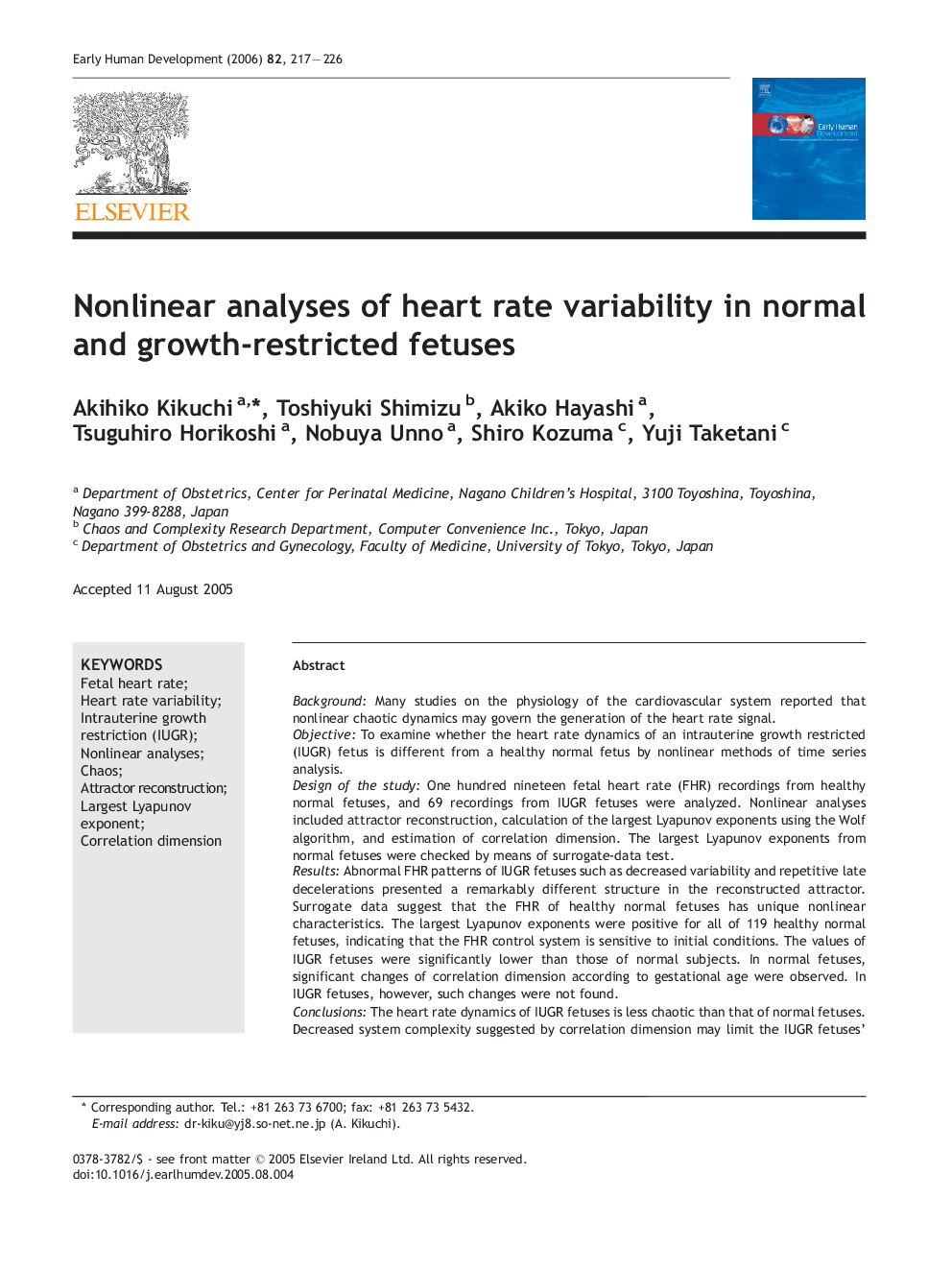| Article ID | Journal | Published Year | Pages | File Type |
|---|---|---|---|---|
| 3917423 | Early Human Development | 2006 | 10 Pages |
BackgroundMany studies on the physiology of the cardiovascular system reported that nonlinear chaotic dynamics may govern the generation of the heart rate signal.ObjectiveTo examine whether the heart rate dynamics of an intrauterine growth restricted (IUGR) fetus is different from a healthy normal fetus by nonlinear methods of time series analysis.Design of the studyOne hundred nineteen fetal heart rate (FHR) recordings from healthy normal fetuses, and 69 recordings from IUGR fetuses were analyzed. Nonlinear analyses included attractor reconstruction, calculation of the largest Lyapunov exponents using the Wolf algorithm, and estimation of correlation dimension. The largest Lyapunov exponents from normal fetuses were checked by means of surrogate-data test.ResultsAbnormal FHR patterns of IUGR fetuses such as decreased variability and repetitive late decelerations presented a remarkably different structure in the reconstructed attractor. Surrogate data suggest that the FHR of healthy normal fetuses has unique nonlinear characteristics. The largest Lyapunov exponents were positive for all of 119 healthy normal fetuses, indicating that the FHR control system is sensitive to initial conditions. The values of IUGR fetuses were significantly lower than those of normal subjects. In normal fetuses, significant changes of correlation dimension according to gestational age were observed. In IUGR fetuses, however, such changes were not found.ConclusionsThe heart rate dynamics of IUGR fetuses is less chaotic than that of normal fetuses. Decreased system complexity suggested by correlation dimension may limit the IUGR fetuses' ability to maintain cardiovascular integrity, and therefore, to adapt to the variety of internal and external cardiovascular stresses.
